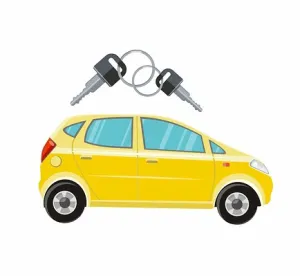Statistics reveal that the summer months are the most dangerous time of the year for teenage drivers. With school out for the summer months, many teenagers have additional time away from their academic responsibilities to spend time with family and friends. Part-time jobs, pool parties and gatherings often require teen drivers to spend more time on the road. More than 1000 individuals lose their lives every year in automobile crashes involving teenage drivers.
For teen motorists, the seven deadliest days for driving fall between Memorial Day and Labor Day. According to statistics maintained by the National Highway Traffic Safety Administration (NHTSA), the highest number of fatal accidents occur in the early part of June, on the Fourth of July, in the middle of July, and during the first few weeks in August.
A study by AAA (American Automobile Association) confirmed that six out of 10 crashes with teenage drivers behind the wheel also involve distractions. Some of these distractions included talking with friends inside the vehicle, speaking on mobile phones, texting, reading emails, consuming beverages, eating or fatigue. The study also revealed that half of all teenage drivers admitted to reading emails and text messages while driving in the previous month.
The AAA Director of State Relations Jennifer Ryan was quoted as saying, “It’s no secret the teens are extremely connected to their cell phones. Many teens are texting and using social media behind the wheel more often than in the past, which is making an unsafe situation even worse.”
The Director also said that “nearly 2/3 of all people injured or killed in crashes involving teen drivers are people other than the teens themselves. This shows that teen drivers can be a risk to everyone on the road and it is important to regulate their actions when behind the wheel.”
A Disturbing Trend
The disturbing trend of driving while connected to social media combined with a lack of years of experience in driving has led to a significant increase in the number of injuries and fatalities associated with young drivers.
Numerous studies have shown that teenagers use their mobile technology while driving and in doing so tend to look down at their phone to text or read while the vehicle is moving. Recent findings from the Pew Research Center show that 55 percent of teenagers on average send at least 80 text messages every day. Driving distracted by texting can create an immediate jeopardy and unsafe situation for the driver, passengers and others sharing the roadways.
Findings by the Virginia Tech Transportation Institute revealed that texting while driving increases the potential of being involved in a crash by 2300 percent compared to driving without distractions.
What Parents Can Do
It is impractical for parents to follow their teenage drivers to ensure they are obeying the rules of the road and taking appropriate measures when behind the wheel. However, there are specific actions a parent can take to ensure that their child drives safely. These include:
-
Ride Along with Your Teenager When Possible – the National Institute of Health (NIH) recommends accompanying your teenage driver for a minimum of 50 hours within the hundred days between Memorial Day and Labor Day. Riding along in the vehicle allows the parent to promote safer habits when driving under a variety of conditions.
-
Always Know Where the Teenager Is Going – Before the parent hands the keys over to the teenager, it’s essential to discuss where they are going and the safest route to reach their destination. Spending time with the teenager and assisting them in making decisions about allotting adequate time to get where they’re going and helping them choose alternate routes if necessary can minimize the potential of the young driver making poor decisions because they are running late.
-
Discuss the Dangers of Distraction – Having a discussion with your child about the dangers of loud music, texting, speaking to passengers, drinking or eating while driving and channel surfing the radio has the potential of minimizing serious problems that could cause them injury or harm if involved in an accident.
-
Be Your Child’s Role Model – The easiest way to teach your child how to always obey the rules of the road and drive safely is to be their role model. Setting an example by displaying safe driving habits, maintaining safe driving speeds, following the rules of the road, wearing your seatbelt and staying calm in difficult driving conditions goes a long way in promoting good habits.
Many young drivers have questionable judgment and unpreventable lack of experience that increases the potential risk of being involved in an accident. Young motorists between 16 and 19 years old have a proportionately higher risk of causing an accident compared to any other age group of drivers.



 />i
/>i

